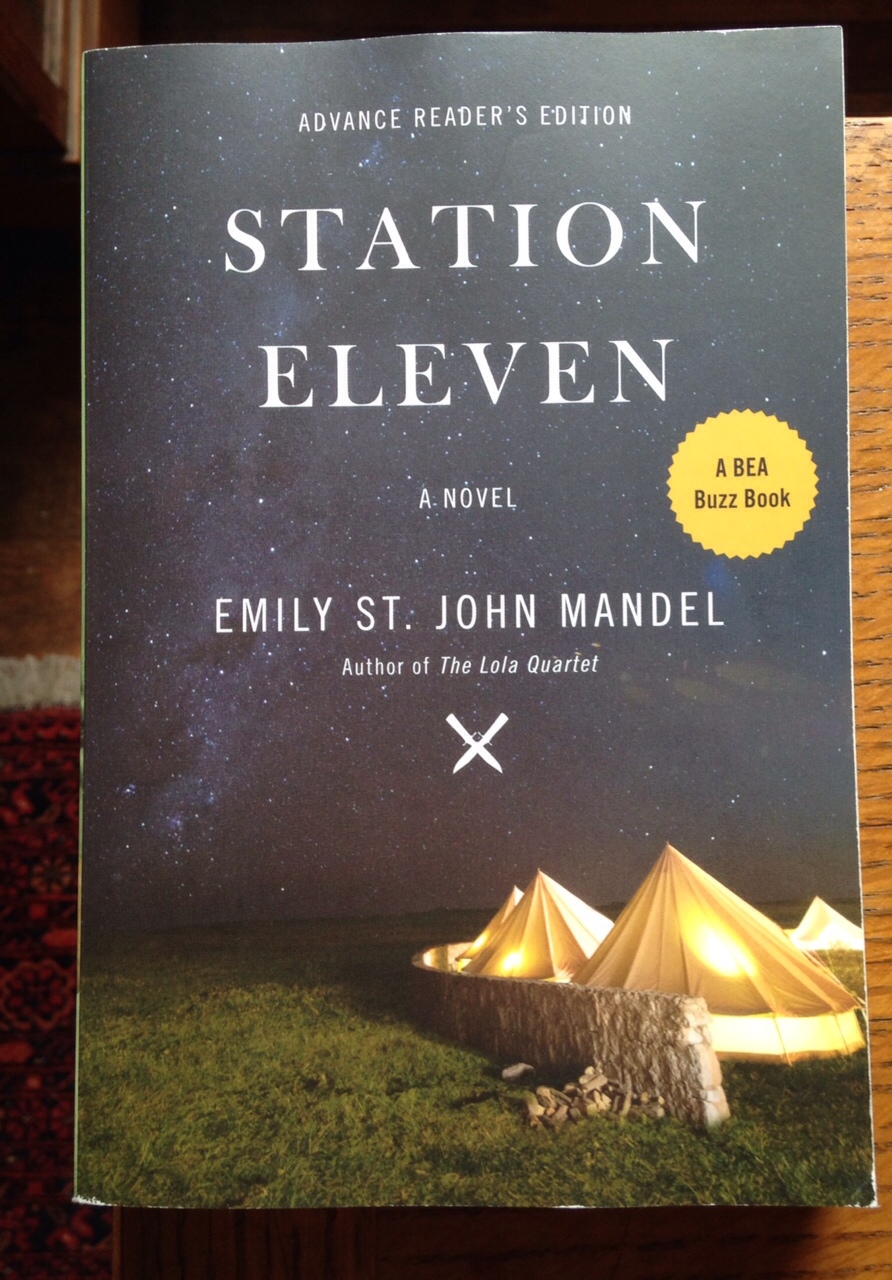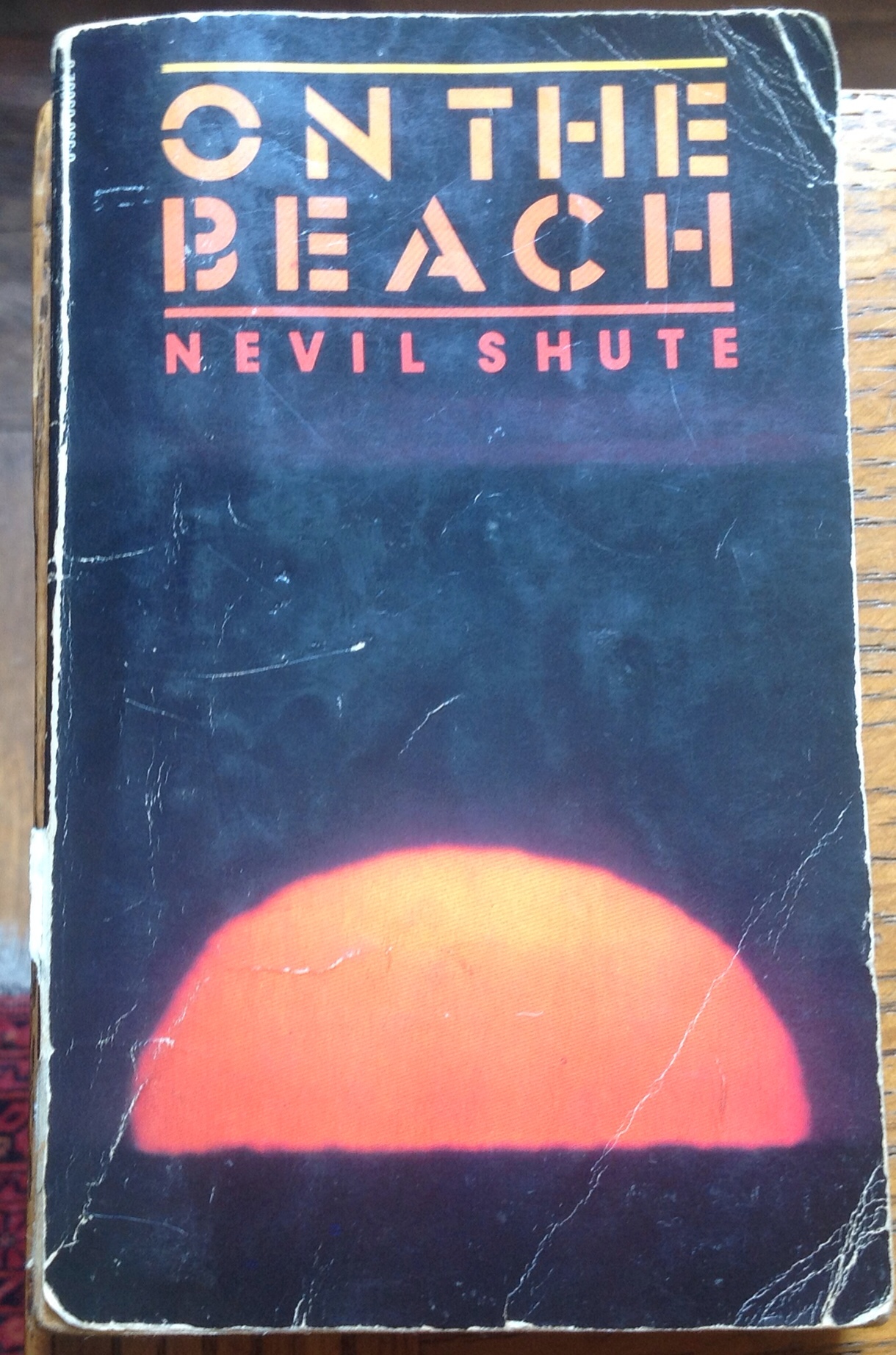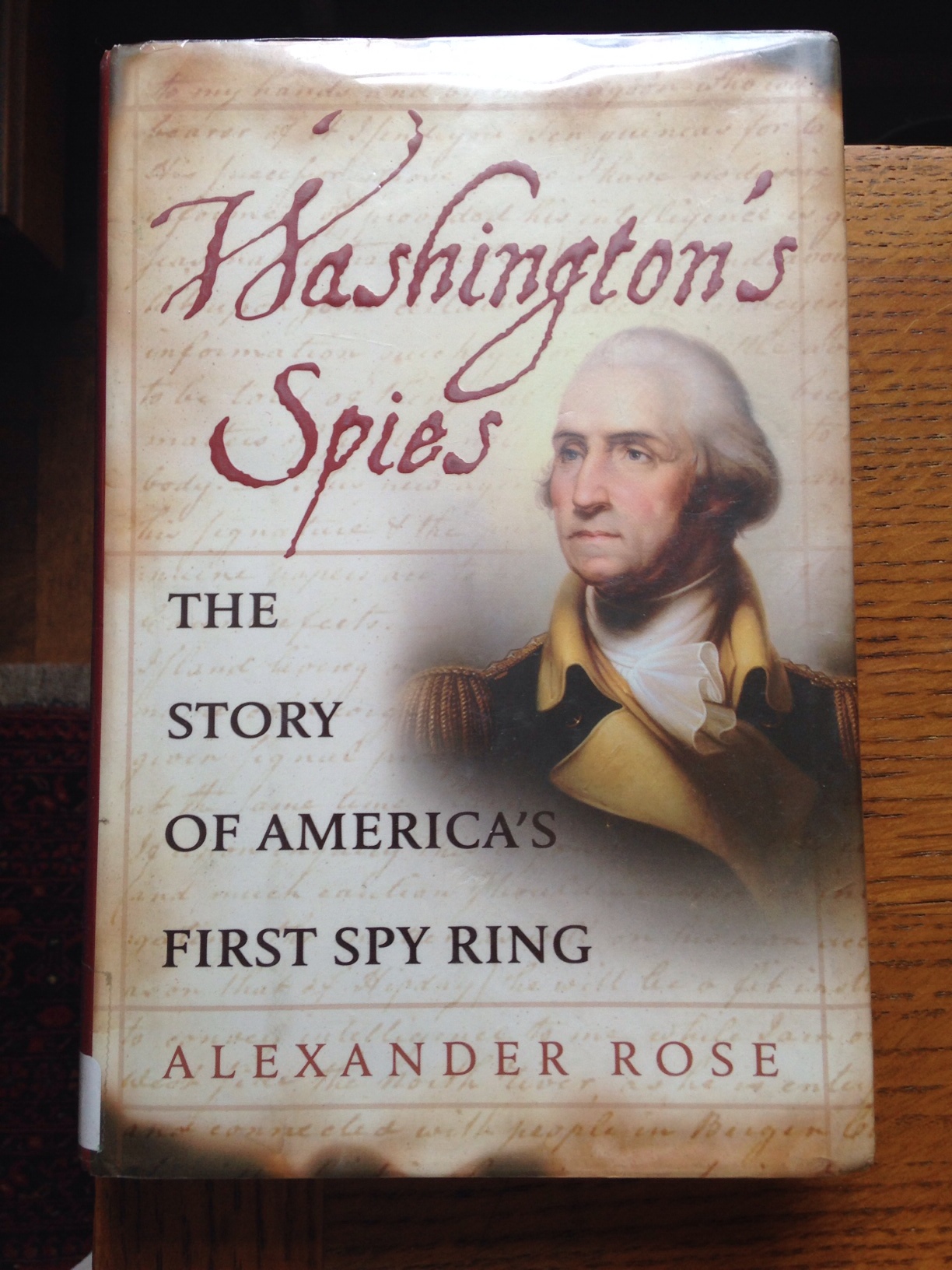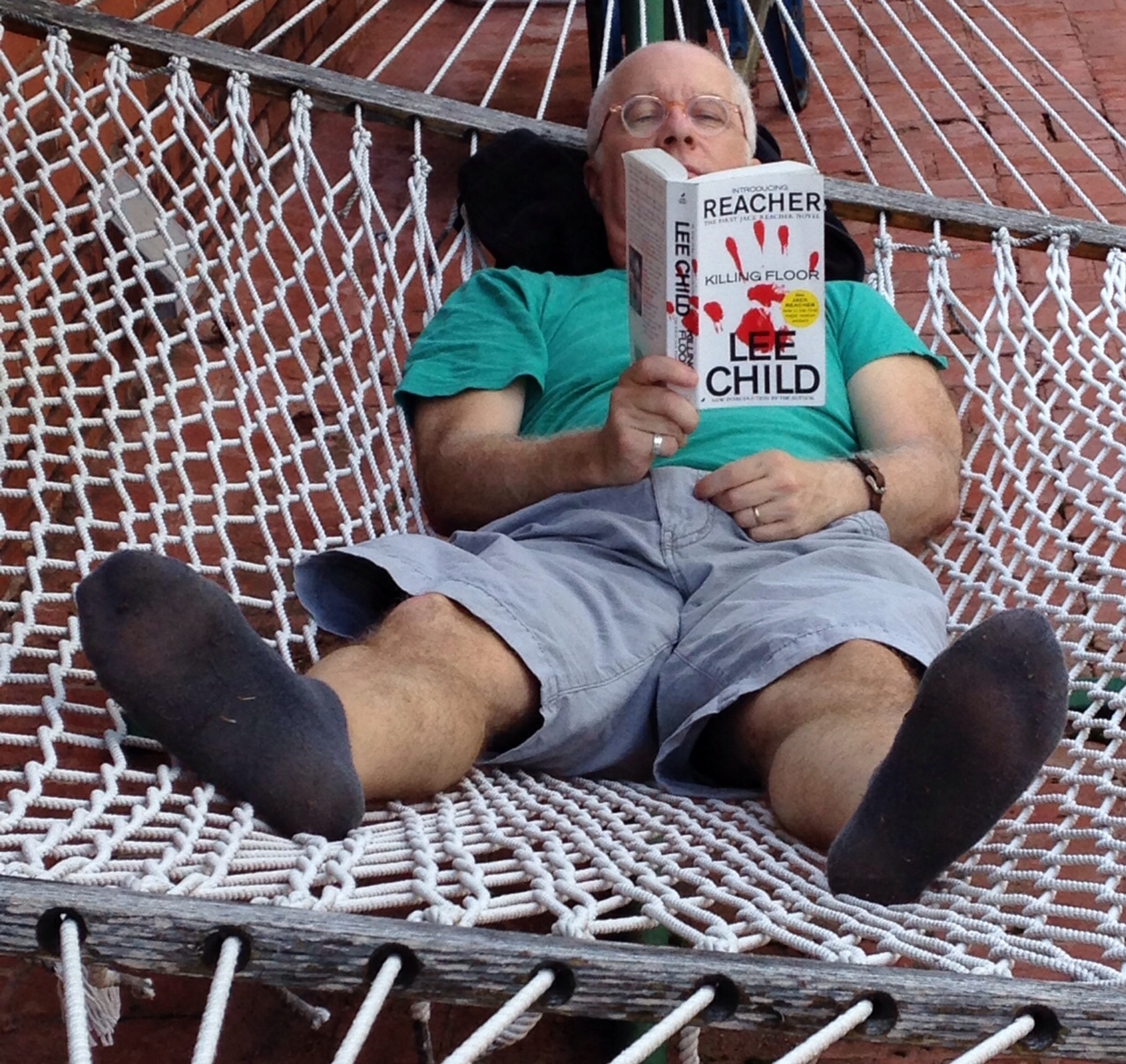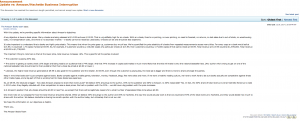 Had a great time last night at the Housing Works Bookstore Cafe in Soho, where a preview of two important Fall titles was put on by the New Atlantic Independent Booksellers Association (NAIBA). As soon as I arrived I saw Eileen Dengler, Executive Director of NAIBA, whom I’ve known since my days with Undercover Books in Cleveland. Among many booksellers on hand, I met Heidi Shira Tannenbaum, manager of the Housing Works store; Margot Sage-El, Watchung Booksellers, Montclair, NJ*; two female staff members from Word Bookstore‘s Jersey City location; Todd Dickinson, of Aaron’s Books in Lititz, PA; Ezra Goldstein of Community Bookstore in Brooklyn; Roy Solomon of Village Bookstore in Pleasantville, NY; and Bill Reilly of River’s End Bookstore in Oswego, NY, site of the US Army camp where during WWII nearly 1,000 refugees were brought for sanctuary by Ruth Gruber, then a member of the FDR administration. She chronicled this in her book HAVEN: The Dramatic Story of 1,000 WWII Refugees and How They Came to America (out first in 1985), which I republished in trade paper in 1999, when I was with Crown Publishing. Bill told me that HAVEN—which along with four other books by Gruber is now available from Open Road Media—is his store’s top-selling book of local history; indeed I found the Open Road edition featured on the left-hand rail of the store’s website. Though Bill’s store is in upstate NY, near Lake Ontario, he hadn’t even traveled the farthest to be at this gathering: that recognition went to a bookseller from Buffalo. I was also delighted to see longtime Random House sales rep Ruth Liebmann in the audience. A nicely stocked bar with appetizers was generously provided by book distributor Baker & Taylor.
Had a great time last night at the Housing Works Bookstore Cafe in Soho, where a preview of two important Fall titles was put on by the New Atlantic Independent Booksellers Association (NAIBA). As soon as I arrived I saw Eileen Dengler, Executive Director of NAIBA, whom I’ve known since my days with Undercover Books in Cleveland. Among many booksellers on hand, I met Heidi Shira Tannenbaum, manager of the Housing Works store; Margot Sage-El, Watchung Booksellers, Montclair, NJ*; two female staff members from Word Bookstore‘s Jersey City location; Todd Dickinson, of Aaron’s Books in Lititz, PA; Ezra Goldstein of Community Bookstore in Brooklyn; Roy Solomon of Village Bookstore in Pleasantville, NY; and Bill Reilly of River’s End Bookstore in Oswego, NY, site of the US Army camp where during WWII nearly 1,000 refugees were brought for sanctuary by Ruth Gruber, then a member of the FDR administration. She chronicled this in her book HAVEN: The Dramatic Story of 1,000 WWII Refugees and How They Came to America (out first in 1985), which I republished in trade paper in 1999, when I was with Crown Publishing. Bill told me that HAVEN—which along with four other books by Gruber is now available from Open Road Media—is his store’s top-selling book of local history; indeed I found the Open Road edition featured on the left-hand rail of the store’s website. Though Bill’s store is in upstate NY, near Lake Ontario, he hadn’t even traveled the farthest to be at this gathering: that recognition went to a bookseller from Buffalo. I was also delighted to see longtime Random House sales rep Ruth Liebmann in the audience. A nicely stocked bar with appetizers was generously provided by book distributor Baker & Taylor.
The first writer to speak was Robert W. Snyder, Director of the American Studies Program at Rutgers. His forthcoming book is CROSSING BROADWAY: Washington Heights and the Promise of New York City, to be published in December by Cornell University Press. My first five years in NYC I lived in Washington Heights, on Bennett Avenue at 186th Street, on the west side of Broadway—still the defining artery of the neighborhood—so I very much enjoyed meeting Snyder, then hearing his presentation on the book. It chronicles the evolution of this northern Manhattan neighborhood over the past century, and how it stands todayas quite a stellar example of diverse urban populations living successfully side-by-side, even while it more and more faces the price of its own success, with gentrification, rising home prices, and distortions to the social weave that may already be diminishing its richness. I recall that when I lived up there my NY State Assemblyman was J. Brian Murtagh, a voluble Irish pol who was proud of saying that his constituents spoke some astonishing number of languages among themselves—more than fifty, I recall. The dominant groups had long been Irish, German-Jewish, and Dominican, but with many other nationalities, too. Separately, we spoke about upper Manhattan, which has been important in NY history since the Revolutionary War. I told him I cover it often here writing about the Little Red Lighthouse, underneath the eastern arch of the George Washington Bridge, aka the Great Gray Bridge, and High Bridge, where an original foot-bridge between Manhattan and the Bronx is being restored.
I appreciated that in introducing Snyder my longtime book biz friend, Christopher Kerr, who reps Cornell University Press, voiced a brief shout-out to me, evoking the years I lived in Washington Heights, when amid the ravages of the crack epidemic, the nabe was too often known most for its high crime rate. Actually, my part of the Heights had little crime, and I was able to pay less than $600 per month rent, in 1985, for a comfortable 2nd floor apartment in a 6-story building. I also had the good fortune to buy furniture and bookcases from the daughter of the German-Jewish woman who’d brought them from Germany decades earlier. I still have the bookcases today, though I moved to the upper west side of Manhattan in 1990.
The second author last night was Emily St. John Mandel, a novelist with Canadian roots, having grown up in western BC, who then lived in Montreal. I met her briefly during BEA in 2013, at a Greenwich Village reception sponsored by the National Book Critics Circle (NBCC). I recalled last night that she said then she was finishing a manuscript, now completed, titled Station Eleven. Each of her three previous novels has received great reviews, like this comment about her debut book, from an erudite bookseller/reader at Rainy Day Books, a top indie bookstore in Kansas City, KS.
“Last Night in Montreal took me by surprise in the most wonderful ways….From the very first chapter, I was drawn in to her provocative, delicately grim world full of wanderlust, betrayal, and the quest for answers. Each of [Mandel’s] deliciously real characters are searching for answers to the questions of their lives, compelled to hunt them out no matter how shocking or painful those answers may be. Mandel’s novel, though relatively short, amazed me with its intricacies and complexities. As days go by, I find myself thinking of more and more reasons I so loved [it].”—Elizabeth Lewis, Rainy Day Books
St. John Mandel’s new novel will be published September 9 by Knopf in the US, then separately in North America by Harper Canada, and Picador in the UK. I’d expect there will also be foreign language editions. It’s a very impressive book, and she spoke about it beautifully. St. John Mandel began by explaining that she’s always loved reading post-apocalyptic fiction, like Cormac McCarthy’s The Road, and she wrote her new novel as a kind of love letter to the present, a meditation on what we would miss most if all that we’re used to went away, and what we would long for most keenly. In literature, she imagined that the sudden subtraction from our midst of the works of Shakespeare would be one of our greatest losses, so she conceived a traveling theater troupe who continue performing Shakespeare’s plays, even while the world around them is withering away. She had me at theatre troupe, as I quickly remembered novels I’ve enjoyed, like Robertson Davies’ early book Tempest-Tost, about a community group putting on “The Tempest,” and the funny, ribald, and wrenching Canadian TV series Slings & Arrows, which features recurring characters in a theater company staging “Hamlet,” “Macbeth,” and “King Lear” over three seasons. For the apocalyptic part, on the subway downtown, I’d been reading a battered copy of Nevil Shute’s post-nuclear classic, On the Beach, so you can imagine I was immediately eager to begin Emily’s book, leaving Shute’s book in my knapsack on the ride home. Station Eleven was a Buzz Book at BEA in May but I had missed the presentation given about it then by her Knopf editor, Jennifer Jackson, who introduced her author last night and has written an eloquent ode to the book for booksellers that’s printed in the ARC. On the subway I found myself immediately captured by the wistful voice and St. John Mandel’s exquisite sentence-making, where prop snowflakes stand in for the creeping coldness falling all around us.
Here are pictures from last night’s enjoyable reception, with thanks to all the booksellers, publishers, reps, sponsors, hosts, and authors.
* I was excited to discover on the Wachtung Booksellers’ website that NY Times reporter Harvey Araton—whose novel Cold Type I picked up at BEA, and which I loved reading, making it my #FridayReads on June 14—will be at the store in Montclair for a signing on July 23. I hear Montclair is a great town for books and reading.

